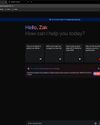
Let’s start with a history lesson. The first high-level languages—which made their debut in the 1950s and included the likes of FORTRAN, ALGOL, and COBOL—were designed as down-to-earth tools with little thought given to education. This changed in 1964 with the introduction of BASIC. The language’s acronym hints at its nature, and its full name, Beginners All-Purpose Symbolic Instruction Code, emphasizes its educational credentials. Indeed, BASIC was designed for use by students who had little appreciation of computers. It outlived other languages of that era, having been adopted for use in the home computers of the late ’70s and ’80s, and helped another generation learn to code.
While BASIC remained largely unchallenged for several decades, if you want to help your children learn to code today, it’s not nearly as easy to choose a language. For a start, there are now several other languages that were designed exclusively, or almost so, for education. Also, any discussion of beginners’ languages invariably brings up various languages which, although not originally intended for such, are considered to have a role in education.
Denne historien er fra August 2021-utgaven av Maximum PC.
Start din 7-dagers gratis prøveperiode på Magzter GOLD for å få tilgang til tusenvis av utvalgte premiumhistorier og 9000+ magasiner og aviser.
Allerede abonnent ? Logg på
Denne historien er fra August 2021-utgaven av Maximum PC.
Start din 7-dagers gratis prøveperiode på Magzter GOLD for å få tilgang til tusenvis av utvalgte premiumhistorier og 9000+ magasiner og aviser.
Allerede abonnent? Logg på

Google Gemini vs. ChatGPT
Which LLM currently holds the crown?

Frostpunk 2
Endure a blizzard of tough choices and lasting consequences in the survival city builder sequel

Elgato Facecam Neo
Always sees us in the best light but lacks focus: 8/10 boyfriend, er, camera

Elgato Wave Neo
The Kanye West of mics: Easy to get into, but a little weird

Razer BlackWidow V4 75%
Solid and compact, with hot-swappable switches

Razer Wolverine V3 Pro
Razer's pro controller is even better than Microsoft's

Acer Predator GM712
2008 called, it wants its projector back

AndaSeat Kaiser 4 XL
A chair as big and as comfortable as they come

Gigabyte F027Q2
Speed is of the essence with this OLED screen

Acer Nitro 14
AMD puts on a good show, but it still lacks punch